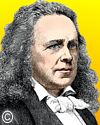
On 9 July 1819, Elias Howe was born. He was the son of a farmer, but his persistence and inventiveness led to significant progress in the early design of an important machine. Sadly, as with many inventions of his era, he had to spent much effort and money protecting his patents. You can read more — about how he developed his ideas into a commercial product, and how it eventually changed his life — in this Biography of Elias Howe, a chapter from Great Fortunes and How They Were Made (1871). You'll be answering a question about exactly what was his invention in the quiz below. He became famous enough that his life was commemorated with the issue of a 5¢ postage stamp in 1940.

On 9 Jul 1933, Oliver Sacks was born. He wrote several best-selling books, but your webmaster has a favorite. Today's book pick is: Uncle Tungsten: Memories of a Chemical Boyhood, by Oliver Sacks. Long before he became a distinguished neurologist and bestselling writer, he was a small English boy, growing up in a household of polymaths who fostered in his science. He became fascinated by metals and chemical reactions (the louder and smellier the better), photography, squids and cuttlefish, H.G. Wells, and the periodic table. In this endlessly charming and eloquent memoir, the author of The Man Who Mistook His Wife for a Hat and Awakenings, chronicles his love affair with science and the magnificently odd and sometimes harrowing childhood in which that love affair unfolded.
It is available from Amazon, typically about New from $6.98. Used from $1.22. (As of earlier time of writing - subject to change.)
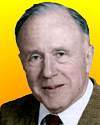 | To Wheeler's comment, If you haven't found something strange during the day, it hasn't been much of a day, a student responded, I can't believe that space is that crummy. Wheeler replied: To disagree leads to study, to study leads to understanding, to understand is to appreciate, to appreciate is to love. So maybe I'll end up loving your theory. |
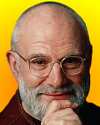 | Nature gropes and blunders and performs the crudest acts. There is no steady advance upward. There is no design. |
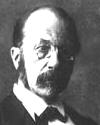 | Heredity is the general expression of the periodicity of organic life. All generations belong to a continuous succession of waves, in which every single one resembles its predecessors and its followers. |
| Before you look at today's web page, see if you can answer some of these questions about the events that happened on this day. Some of the names are very familiar. Others will likely stump you. Tickle your curiosity with these questions, then check your answers on today's web page. | |
| Births | |
 | Elias Howe, an American inventor, was born 9 Jul 1819. Although he wasn’t the first to create a particular type of machine, he was the first in the U.S. to pursue it and was granted a patent on his own machine on 10 Sep 1846. Commercial success came slowly, requiring the defense of his patent against the better marketed machine of another more well-known person in the same industry. Eventually Howe gained riches, but died young at 49. By then, his machines helped revolutionize the factory and in the home. What was Howe's invention? |
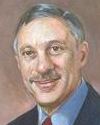 | On 9 Jul 1938, James Pollack was born, an American NASA astrophysicist, who helped develop a theory of the climatic effects after atomic war. He was a world-renowned expert in the study of planetary atmospheres. He resolved the paradox that Saturn’s rings show low microwave emissivity but high radar reflectivity and discovered the first real evidence of sulphuric acid in the clouds of Venus. This theory’s predicted climatic result of atomic war was known by what name? |
| Deaths | |
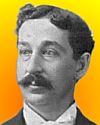 | The inventor and manufacturer of the safety razor (1855-1932) began in 1895 by producing a crude version of a disposable razor blade. A utopian, he wrote four books translating his business experience into social theories, culminating with The People's Corporation (1924). Can you name this inventor? |
| Events | |
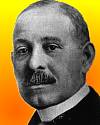 | On 9 Jul of a certain year, Dr. Daniel Hale Williams, at Provident Hospital in Chicago, performed the world’s first successful open heart surgery without using anesthesia. He removed a knife from the heart of a bar-fight stabbing victim. He sutured a wound to the pericardium (the fluid sac surrounding the myocardium) The patient recovered and lived for several years afterward. Dr. Williams was the only African-American in a group of 100 charter members of the American College of Surgeons in 1913 What was the decade in which this open-heart surgey took place? |
 | On 9 Jul 1957 an announcement was made of the discovery of an artificial element, and its name was proposed, for an isotope believed found with a half-life of 10 minutes at 8.5 MeV. Later tests showed that no isotopes of the element with that atomic number had such a half-life. The element was truly discovered in Apr 1958. However, IUPAC accepted the name given to the prematurely discovered element. What is the name of this element? |
Fast answers for the previous newsletter for July 8: Count Ferdinand von Zeppelin • Atlanta, Georgia • leadership to build the atomic-powered submarine, USS Nautilus • Christiaan Huygens • the decade including the year 1800.
 If you enjoy this newsletter, the website, or wish to offer encouragement or ideas, please send feedback by using your mail reader Reply button.
If you enjoy this newsletter, the website, or wish to offer encouragement or ideas, please send feedback by using your mail reader Reply button. Your click on a Facebook, StumbleUpon, or other social button on the site webpages is also a welcome sign of appreciation. Thank you for using them.
© This newsletter is copyright 2020 by todayinsci.com. Please respect the Webmaster's wishes and do not put copies online of the Newsletter — or any Today in Science History webpage. (If you already have done so, please remove them. Thank you.) Offline use in education is encouraged such as a printout on a bulletin board, or projected for classroom viewing. Online, descriptive links to our pages are welcomed, as these will provide a reader with the most recent revisions, additions and/or corrections of a webpage. For any other copyright questions, please contact the Webmaster by using your mail reader Reply button.
--
If you do not want to receive any more newsletters, Unsubscribe
To update your preferences and to unsubscribe visit this link
Executive Real Estate Business Class
-
"It was like a man with wings. It wasn't like anything you'd see on TV or in a monster movie." ...
About the publisher
Search This Blog
Blog Archive
-
▼
2020
(1542)
-
▼
July
(200)
- PHOTOGRAPHY: The danger of documenting sharks
- Meet The Serial Killer Who Ate His Victims Because...
- The Roundup Top Ten from History News Network
- On This Day for July 31 - Lunar Roving Vehicle fir...
- Newsletter for Friday 31 July.
- Lockdowns killing more children than COVID + Docto...
- YOUR WEEKLY ESCAPE: Revisiting an iconic Nat Geo c...
- July 31: The Pilgrim Fathers Depart and the Battle...
- ANIMALS: The dog that got COVID-19
- On This Day for July 30 - Death of Otto von Bismar...
- Newsletter for Thursday 30 July.
- Frontline Docs 2nd Video Press Conf at SCOTUS We h...
- BREAKING NEWS: First U.S. dog to test positive for...
- July 30: First Defenestration of Prague, the 1st O...
- Demystified: Why Do Wolves Howl?
- The Champs Are Back on Forged in Fire Tonight
- SCIENCE: A rush to Mars during a rough patch at home
- Breaking News from History News Network
- On This Day for July 29 - National Aeronautics and...
- Newsletter for Wednesday 29 July.
- All Social Media Censor Frontline Docs COVID Video...
- July 29: Spanish Armada Scattered and Taft's Secre...
- TRAVEL: How to stay safe if you need to travel
- On This Day for July 28 - Beginning of World War I...
- Newsletter for Tuesday 28 July.
- Video Presentation from Washington Summit: America...
- July 28: Robespierre Guillotined, Austria-Hungary ...
- HISTORY: How the vice presidency became critical
- Enjoy Summer with Nat Geo Kids Magazine
- New This Week on History News Network
- On This Day for July 27 - Terrorist attack at Atla...
- Newsletter for Monday 27 July.
- COVID Propaganda & Tyrannical Edicts Affecting Men...
- July 27: Walter Raleigh Brings Tobacco, the Atlant...
- FAMILY: Can you transfer your ‘retro fun’ to your...
- The 10 greatest discoveries made by the British pu...
- On This Day for July 26 - Suez Canal seized, John ...
- Newsletter for Sunday 26 July.
- CDC says actual # of cases is up to 13X higher tha...
- July 26: 1st Muslim Civil War, Pizarro's Royal Cha...
- The Compass: Greece
- On This Day for July 25 - American advance into Ca...
- Newsletter for Saturday 25 July.
- VIRUS UPDATE: What does COVID-19 do to a child's b...
- July 25: The 1st Steam Locomotive, Mussolini Dismi...
- PHOTOGRAPHY: The photo that shocked a nation
- This Hardened Blob Of Nuclear Waste Could Kill You...
- On This Day for July 24 - Beginning of Mata Hari's...
- The Roundup Top Ten From History News Network
- Newsletter for Friday 24 July.
- Medical Journal: make the vaccine Mandatory! + Fre...
- YOUR WEEKLY ESCAPE: The man who claims to be Jesus...
- July 24: Cartier Lands in Canada, Mary Queen of Sc...
- ANIMALS: Let’s not forget this other catastrophe
- Demystified: Are Dogs Really Color-Blind?
- On This Day for July 23 - Egyptian monarchy topple...
- Newsletter for Thursday 23 July.
- listen to Dixie Brogdon Hopson tells how the hospi...
- July 23: Upper and Lower Canada United and the Bre...
- SCIENCE: The joy of vintage comforts
- A Puzzling Challenge on Forged in Fire Tonight
- Explore King Tut's tomb with National Geographic H...
- Breaking News from History News Network
- On This Day for July 22 - Deng Xiaoping reinstated...
- CDC Knows Masks and other methods don't work to st...
- Newsletter for Wednesday 22 July.
- July 22: First Congress of Vienna and Spoonerism
- TRAVEL: When tourism returns will it be better?
- Enjoy Summer with Nat Geo Kids Magazine
- On This Day for July 21 - Egyptians defeated in th...
- Newsletter for Tuesday 21 July.
- July 21: 1st Battle of Bull Run, the Trans-Siberia...
- HISTORY: John Lewis always stood for the same thing
- New This Week on History News Network
- On This Day for July 20 - First Moon landing, Sir ...
- Newsletter for Monday 20 July.
- What Scientific Study Shows 6 feet distance or "ma...
- July 20: On This Day in History
- FAMILY: Searching for patience
- Anne of Cleves: Henry VIII's most successful queen?
- On This Day for July 19 - U.S. women's suffrage mo...
- Newsletter for Sunday 19 July.
- Mask Truth Part 2, Data by Nations shows Hydroxych...
- July 19: 1st US Women's Rights Convention and V fo...
- The Compass: Colombia
- On This Day for July 18 - Publication of Mein Kamp...
- Newsletter for Saturday 18 July.
- Enough! Mask Truth, re-Creating you! the intended...
- CORONAVIRUS SPECIAL EDITION: What type of person d...
- July 18: Spanish Civil War Begins and 7 Years of K...
- PHOTOGRAPHY: Showing a nation losing its drinking ...
- How Julia Child Went From World War 2 Spy To Belov...
- Introducing Expedition: Learn! A New Way to Help K...
- The Roundup Top Ten for July 17, 2020
- On This Day for July 17 - Beginning of the Spanish...
- Newsletter for Friday 17 July.
- July 17: Execution of the Romanovs and a Stormy Bi...
- YOUR WEEKLY ESCAPE: An intimate look inside a mode...
- ANIMALS: The trouble with 'retired' chimps
- Man vs. 800-Pound Beast! Watch New Episode of Alon...
-
▼
July
(200)
-
Blogroll
-
About
HistoryFact










0 comments:
Post a Comment